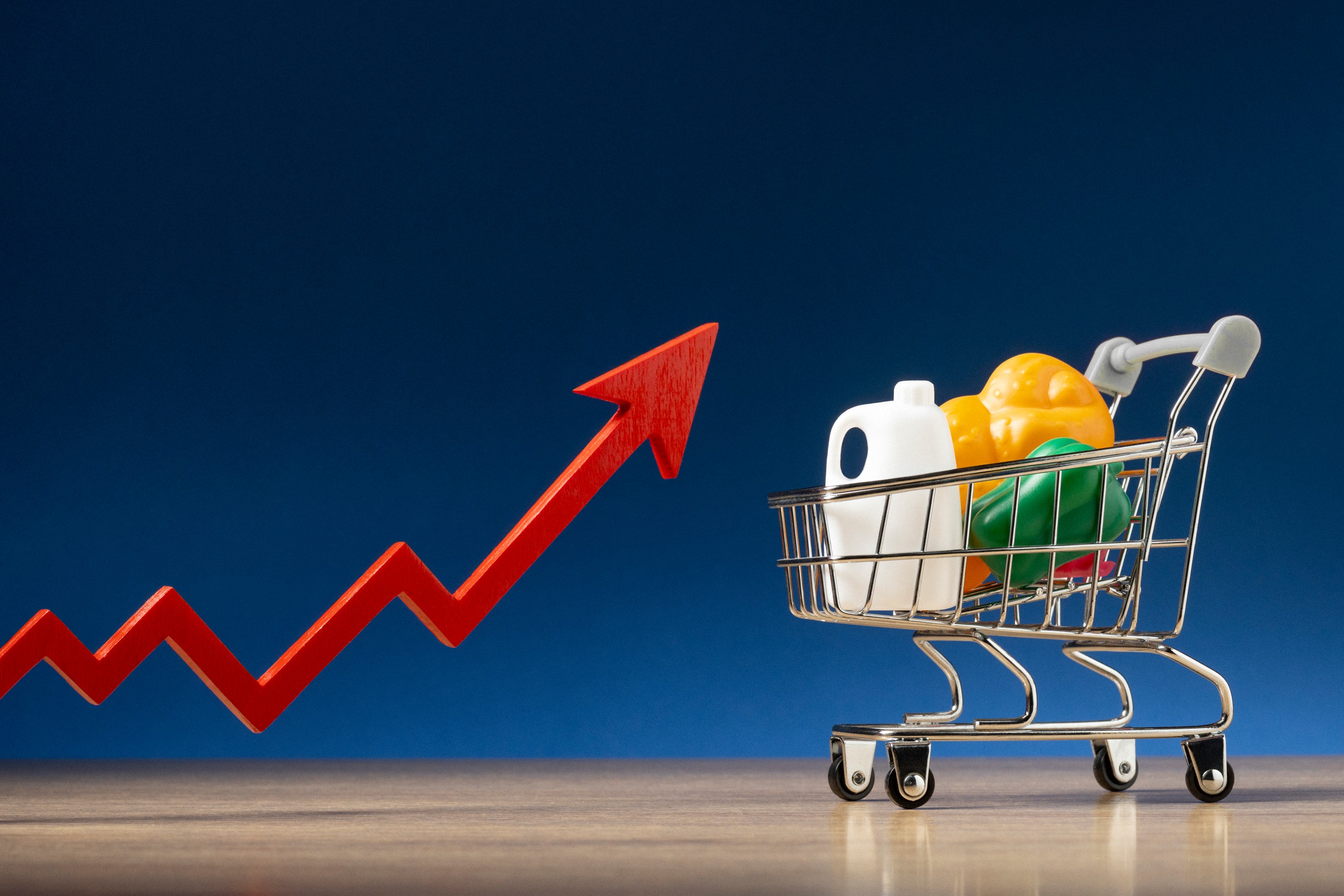Maximizing Sales Operations with Data-Driven Insights in Retail

In the fast-evolving retail landscape, the ability to leverage data is becoming a cornerstone of success. For supermarkets and retail stores, it’s no longer enough to rely on traditional sales methods or intuition to make key decisions. The future belongs to those who can harness the power of data-driven insights to optimize sales operations and drive performance.
Imagine a supermarket that knows precisely what products to promote, when to restock, and how to optimize staff allocation—all thanks to data analytics. This supermarket isn’t just guessing what its customers want; it’s analyzing past behavior, predicting future trends, and continuously improving operations to maximize revenue.
From sales forecasting and inventory management to customer behavior analysis, data-driven insights are transforming sales operations in retail. Let’s explore how these technologies are revolutionizing supermarkets and empowering them to make smarter, more profitable decisions.
In the past, retail sales operations were largely driven by gut instinct, past experiences, and limited data. Store managers would look at sales trends, customer feedback, and historical data, but much of the decision-making process was based on manual analysis and trial-and-error.
While this approach worked for decades, the complexities of modern retail require a far more sophisticated strategy. The challenges are vast:
Fragmented sales channels make it difficult to track customer journeys across in-store and online platforms.
Manual analysis of sales data is time-consuming and often incomplete.
Limited insights lead to missed opportunities for upselling, cross-selling, or optimizing stock placement.
In a world where customer expectations are constantly evolving, and competition is fierce, supermarkets need more than just historical data. They need real-time insights that allow them to adapt to changing trends, anticipate demand, and optimize their sales operations on the fly.
Enter data-driven insights—the next frontier in sales optimization. By utilizing advanced analytics, AI, and machine learning, supermarkets can now gain a deeper understanding of their sales performance, customer preferences, and operational efficiency. This shift from reactive to proactive decision-making is giving supermarkets a competitive edge, allowing them to:
Predict sales trends with greater accuracy.
Optimize product placement based on real-time data.
Increase customer satisfaction through personalized promotions and offers.
Let’s take a closer look at how data-driven insights are being applied to key areas of sales operations in the retail industry.
One of the most valuable applications of data-driven insights is sales forecasting. By analyzing past sales data, customer behavior patterns, and external factors such as holidays or local events, supermarkets can predict future demand with remarkable accuracy.
For example, during the holiday season, supermarkets often see a spike in demand for specific products—such as holiday treats, decorations, or ingredients for traditional meals. By using sales forecasting tools, stores can prepare in advance, ensuring they have the right products in stock to meet customer demand.
Beyond seasonal trends, data-driven insights allow stores to track daily and weekly sales patterns, adjusting stock levels in real-time to prevent overstock or stockouts. This level of precision not only improves operational efficiency but also ensures that customers can always find the products they need, which leads to higher sales and increased customer loyalty.
Understanding customer behavior is critical to maximizing sales. In today’s retail environment, customers expect personalized experiences that cater to their preferences. Data-driven insights enable supermarkets to analyze customer purchase history, shopping habits, and even in-store behavior, providing a detailed picture of what their customers want.
By segmenting customers based on demographics, buying behavior, and preferences, supermarkets can tailor their marketing strategies to target specific groups. For example, a supermarket might discover that younger shoppers are more likely to buy organic or sustainable products, while older customers prefer value deals on household essentials.
Armed with this knowledge, supermarkets can create personalized promotions and targeted advertising that resonates with each customer segment. This level of personalization not only drives sales but also builds customer loyalty, turning one-time shoppers into repeat customers.
Product placement is a science in itself. The way products are arranged on shelves, the layout of the store, and even the signage can significantly impact sales. Traditionally, product placement was based on experience and intuition, but data-driven insights are changing the game.
By analyzing customer traffic patterns, heat maps, and sales data, supermarkets can optimize product placement to maximize visibility and encourage impulse buying. For example, data might show that certain products sell better when placed at eye level or near complementary items. Supermarkets can use this information to rearrange their shelves for better results.
Additionally, data can reveal which areas of the store receive the most foot traffic, allowing stores to strategically place high-margin products in these zones to boost sales. Real-time analytics also provide insights into the effectiveness of in-store promotions, enabling stores to adjust their strategies in real-time to drive better results.
One of the most powerful ways supermarkets are using data-driven insights is through personalized promotions. Rather than sending out generic offers to all customers, supermarkets can use data to tailor promotions based on individual shopping habits, preferences, and previous purchases.
For example, if a customer regularly buys pet food, the supermarket can send them targeted promotions for related products, such as pet toys or treats. Similarly, data can be used to offer personalized discounts on frequently purchased items, driving repeat purchases and increasing customer satisfaction.
By leveraging customer data, supermarkets can not only drive more sales but also foster stronger relationships with their customers. Personalized promotions create a sense of loyalty and show customers that the store understands their needs.
Sales operations don’t just revolve around products; they also involve people. Ensuring that supermarkets have the right number of staff on the floor during peak hours is essential for providing a seamless customer experience. Data-driven insights can help managers predict foot traffic and sales volume at different times of the day or week, allowing them to optimize staffing levels accordingly.
For instance, data might show that certain times of day—such as late afternoons or weekends—see higher foot traffic. Managers can use this information to schedule more staff during these periods, ensuring that checkout lines move quickly and customers receive the assistance they need. Conversely, during slower periods, staffing levels can be reduced to save on labor costs without sacrificing customer service quality.
One of the biggest advantages of data-driven insights is the ability to respond to changes in real-time. Whether it’s a sudden shift in customer preferences, a supply chain disruption, or an unexpected increase in demand, real-time data allows supermarkets to adjust their sales operations on the fly.
For example, if a particular product is flying off the shelves faster than anticipated, real-time data can trigger an immediate restock or reorder. Similarly, if a promotion isn’t generating the expected results, managers can adjust the offer or pivot to a different strategy to improve outcomes.
This level of agility is essential in today’s fast-paced retail environment, where staying ahead of trends and responding to customer needs is critical to maintaining a competitive edge.
Data-driven insights offer a wide range of benefits for supermarkets looking to maximize their sales operations:
Improved forecasting: Accurate demand predictions lead to better stock management and reduced waste.
Personalized marketing: Targeted promotions and offers drive customer loyalty and repeat business.
Optimized operations: Data helps supermarkets streamline everything from product placement to staffing, reducing costs and improving efficiency.
Increased sales: With real-time insights, supermarkets can capitalize on trends and customer behavior, driving higher revenue.
The future of retail sales operations lies in data-driven insights. Supermarkets that embrace advanced analytics, AI, and real-time data are able to optimize their operations, deliver personalized customer experiences, and ultimately drive higher sales. In an industry where competition is fierce and margins are thin, data-driven insights provide the edge needed to thrive.
As the retail landscape continues to evolve, supermarkets that leverage the power of data will be well-positioned to meet the demands of modern consumers and succeed in an increasingly complex market.

For modern telecom enterprises, delivering exceptional QoS is no longer optional—it’s a brand differentiator and a strategic lever for growth. Static provisioning models won’t cut it in a world of hyper-dynamic data usage.